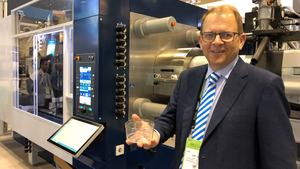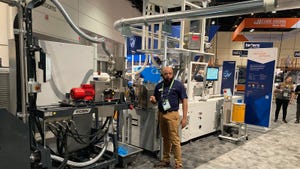Spray-on biodegradable polymer could replace sutures
Placing biodegradable polymer mats on incisions could replace the use of stitches and sutures, but finding an appropriate delivery system has stymied researchers. The mats are typically made by electrospinning, which produces an electrical current that damages living cells. The solution, it turns out, was sitting on a hardware store shelf. Scientists at the University of Maryland, College Park, used a commonplace airbrush to spray the polymer nanofibers and successfully seal incisions on the lung, intestine, and liver of a pig.
March 31, 2014
Different formulations of poly(lactic-co-glycolic acid), or PLGA, were tested to find one that would work in the airbrush. A specific molecular-weight PLGA combined with an acetone-based solvent allowed researchers to produce mats with fibers in diameters measuring approximately 370 nm.
The acetone evaporates before the nanofibers are deposited, suggesting that the solvent won't pose toxicity problems.
In addition to sealing the incisions, the mats were also used to seal diaphragm hernias.
Cells sprayed with the PLGA nanofibers showed no change in health after 24 hours. In lab tests, the nanofiber mats degraded completely over a 42-day period, report researchers in a paper published in ACS Macro Letters.
Polymer nanofiber mats show potential not only in surgical applications but also as biodegradable, drug-releasing implants or as scaffolds for tissue engineering, says Peter Kofinas, a bioengineer at the University of Maryland, College Park. His group currently is doing safety studies and improving the materials for surgical trials in laboratory animals.
About the Author(s)
You May Also Like




